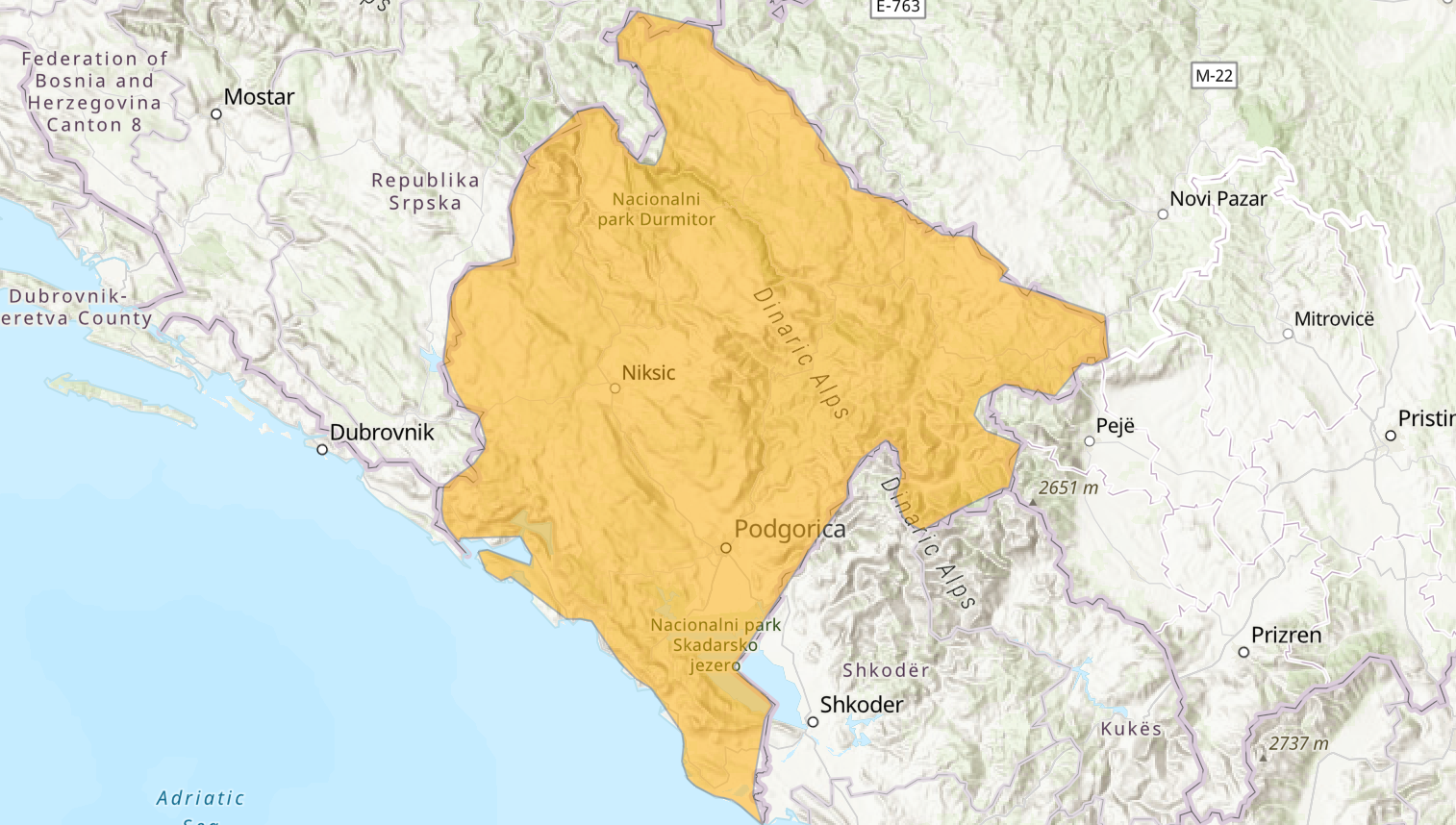Following its split from Serbia in 2006, Montenegro still has a large amount of surplus ammunition that needs to be demilitarised. The country was left with several thousand tonnes of ammunition in military warehouses.1 Actors including the Organization for Security and Co-operation in Europe (OSCE), the UN Development Programme (UNDP), the Bundeswehr Verification Centre, the South Eastern and Eastern Europe Regional Clearinghouse for the Control of Small Arms and Light Weapons (SEESAC), NATO and ITF Enhancing Human Security (ITF) have been working on the ground since 2017 to support the through-life management of ammunition.2 Efforts have included disposing of ammunition to reduce national stockpiles, improving ammunition storage facilities, providing training for national personnel, and assessing the legal framework in Montenegro as well as its harmonisation with international standards on the safe storage of ammunition. Since then, the safety and security of stockpiles has also been addressed under the Western Balkan Roadmap Initiative, funded by the European Union.
1 Dusica Tomovic, “NATO Helps Montenegro Dispose of Yugoslav Weapons,” Balkan Insight, January 20, 2016, https://balkaninsight.com/2016/01/20/montenegro-struggles-to-get-rid-of-jna-weapons-01-19-2016-1/.
2 "Ammunition Management Activity Platform (A-MAP),” GICHD, 2022, https://a-map.gichd.org.
Launch the country dashboard
Further information
Accidental explosions
Since the Small Arms Survey began collecting data in 1979, two accidental explosions have been reported in Montenegro.
Table 1. Accidental explosions in Montenegro (1979–2021)
| Year | Location | Owner/Manager | Deaths | Injuries |
| 2010 | Niksic | Non-state (company) | 0 | 3 |
| 2006 | Vir | Non-state (company) | 0 | 50 |
Source: “Unplanned Explosions at Munitions Sites (UEMS) Database,” Small Arms Survey, updated December 15, 2021, https://smallarmssurvey.org/database/unplanned-explosions-munitions-sites-uems.
Cases of diversion
One case of diversion has been reported since 2015 in Montenegro.
Table 2. Cases of diversion of arms, ammunition and explosives in Montenegro since 2015
| Year | Location | Description |
| 2015 | Pogdorica | 20 sniper rifles and "a considerable amount of ammunition" were stolen from a police warehouse located in the former Center of Security Podgorica building. |
Source: “20 Sniper Rifles Stolen from Montenegrin Police,” B92, July 3, 2015, https://www.b92.net/eng/news/region.php?yyyy=2015&mm=07&dd=03&nav_id=94644.
Disposal
To decrease the above-mentioned risks of accidental explosions and diversion, Montenegro has continuously disposed of its ammunition since 2006.
Table 3. Disposal of tonnes of ammunition in Montenegro (2006–21)
| Year | Tonnes of ammunition |
| 2021 | 58.6 |
| 2020 | 112 |
| 2019 | 341 |
| 2018 | 116 |
| 2017 | 13 |
| 2014 | 40 |
| 2011 | 367 |
| 2010 | 390 |
| 2009 | 272 |
| 2008 | 227 |
| 2007 | 227 |
| 2006 | 272 |
Sources: “Montenegro Demilitarisation – MONDEM Programme,” UNDP, accessed May 10, 2022, https://www.me.undp.org/content/montenegro/en/home/projects/MONDEM.html; “Disposal of over 40 Tonnes of SALW Ammunition Initiated in Montenegro,” SEESAC, October 22, 2014, https://www.seesac.org/News_1/Disposal-of-Over-40-Tonnes-of-SALW-Ammunition-Initiated-in-Montenegro/; SEESAC, Contribution by Regional and International Organizations (Belgrade: SEESAC, 2021); “Military Waste Destruction, Nikšić, Montenegro,” Environmental Justice Atlas, April 25, 2016, https://ejatlas.org/conflict/military-waste-destruction-niksic-montenegro; Bureau of Political-Military Affairs, US Department of State, To Walk the Earth in Safety (Washington, DC: US Department of State, 2022), https://www.state.gov/reports/to-walk-the-earth-in-safety-2022/; Pierre Gobinet, Significant Surpluses: Weapons and Ammunition Stockpiles in South-east Europe (Geneva: Small Arms Survey, 2011), https://www.smallarmssurvey.org/resource/significant-surpluses-weapons-and-ammunition-stockpiles-south-east-europe-special-report; “Factsheet on Montenegro,” NATO, June 2019, https://salw.hq.nato.int/Content/factsheets/20190626_Factsheet%20Montenegro_en.pdf; Pierre Gobinet, Capabilities and Capacities: A Survey of South-east Europe’s Demilitarization Infrastructure (Geneva: Small Arms Survey, 2012), https://www.smallarmssurvey.org/sites/default/files/resources/SAS-SR15-South-East-Europe-Demilitarization.pdf; PR Bureau, “US Assists Montenegro Destroy Excess Weapons and Ammunition,” Government of Montenegro, October 31, 2011, https://www.gov.me/en/article/109503--us-assists-montenegro-destroy-excess-weapons-and-ammunition.
Needs
To further enhance safe and secure ammunition management, the following needs have been identified for Montenegro:
- Development or refinement of standards and procedures on stockpile management;
- Capacity development for the destruction of surplus stockpiles; and
- Technical expert services for destroying surplus of ammunition by authorised subjects.
Source: Montenegro, National Report on the Implementation of the Programme of Action on Small Arms and Light Weapons (PoA) and the International Tracing Instrument (ITI) (New York: Permanent Mission of Montenegro to the UN, 2020), https://unoda-poa.s3.amazonaws.com/reports/MNE-English-963-SUBMITTED.pdf; "Needs Analysis Dataset," AMAT, 2022; UNIDIR "Country Insight" series, https://unidir.org/publications?field_program_type_target_id=3&title=&field_keywords_target_id&field_language_value=All&field_publisher_value=&field_audience_target_id=All&field_topics_target_id=All&field_series_target_id=All&field_publication_date_value=All&page=1.



